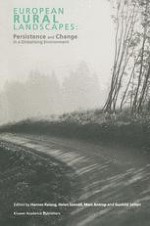2004 | OriginalPaper | Chapter
The Landscape of Vittskövle Estate — At the Crossroads of Feudalism and Modernity
Author : Tomas Germundsson
Published in: European Rural Landscapes: Persistence and Change in a Globalising Environment
Publisher: Springer Netherlands
Included in: Professional Book Archive
Activate our intelligent search to find suitable subject content or patents.
Select sections of text to find matching patents with Artificial Intelligence. powered by
Select sections of text to find additional relevant content using AI-assisted search. powered by
An essential question regarding the understanding of landscape concerns the role of history. While every landscape is considered contemporary, they also possess historical dimensions. Sometimes the historical traits in a landscape are very palpable; but as long as no time machine exists, even the most ancient landscapes must still be regarded as present-day landscapes. “The past is [thus] a foreign country,” as David Lowenthal (1985) has so famously argued. Concerning linear time, there therefore exists a duality in every landscape, simply expressed as a “now” and a “then”. As the line between now and then is constantly moving, it means that the historical dimension of a landscape is continually reshaped. Furthermore, as time moves on, the past takes on different meanings depending on the position of the observer in the present. This is of course valid for history at large — all history bears the mark of the time in which it is written, but landscape history is special in that it is materialised history forming the totality of the present world.
